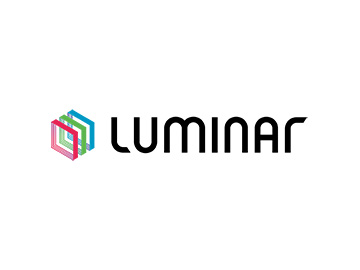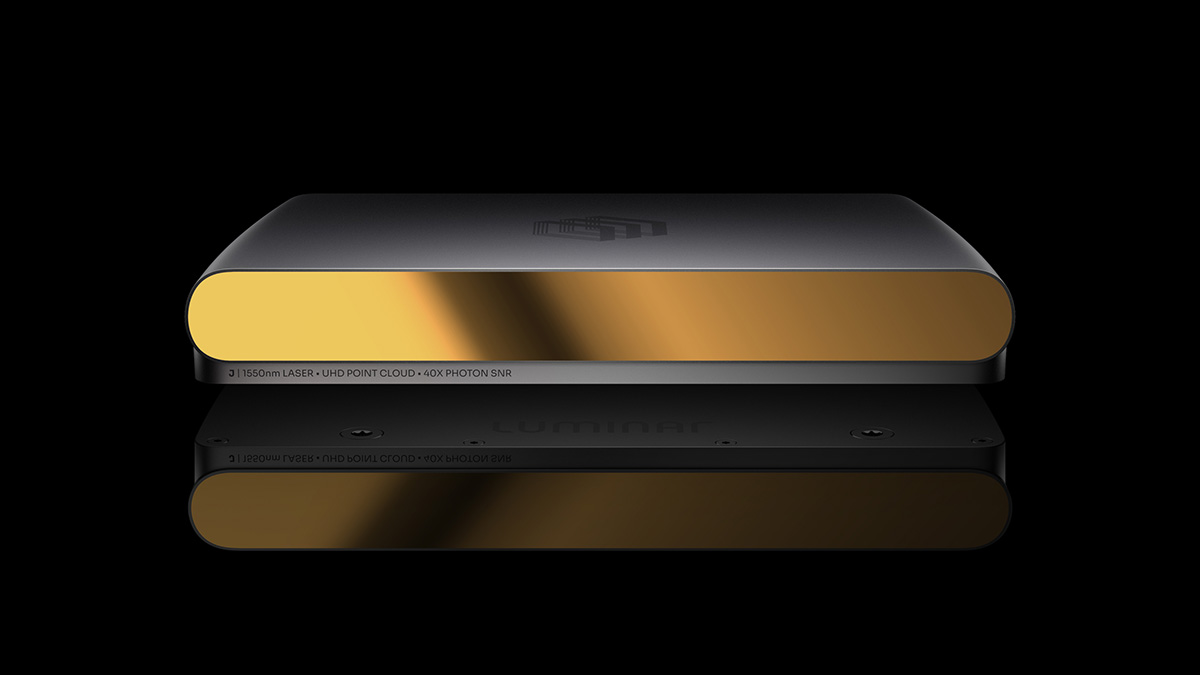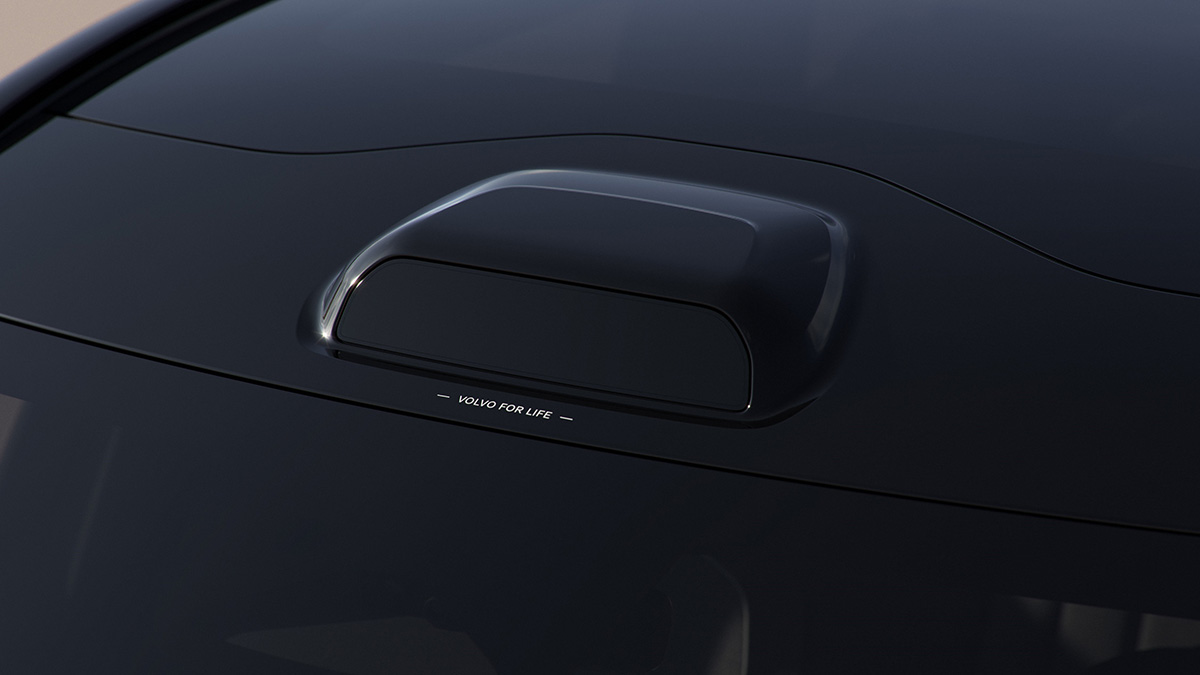Luminar’s next-generation Halo sensor. [Image: Luminar Technologies]
The past month has seen a flurry of announcements by Luminar Technologies, the Silicon Valley–based developer of advanced near-infrared integrated lidar technology for autonomous vehicles.
At an online event in late April, the company unveiled its next-generation integrated lidar product, which Luminar maintains will boost lidar performance while cutting costs and offering better scalability. The company also announced that it had begun shipping its sensors “at scale” as standard equipment for a new electric vehicle from the global automaker Volvo.
The upbeat tone in late April was followed up in early May, however, with more somber tidings. At the beginning of the month, the company revealed that, in a significant restructuring, it would reduce its headcount by 20%, as part of an “asset light” strategy that would increasingly focus on outsourcing production. The following week, the company reported first quarter revenues a hair below target, though its bottom-line loss was lower than a year earlier.
Perhaps most surprising, and the subject of much bloviation in the business press, was the revelation that the electric-vehicle maker Tesla Inc.—whose mercurial CEO, Elon Musk, has repeatedly disparaged lidar’s prospects as a route to autonomous vehicles—was Luminar’s largest customer during the 2024 first quarter.
Upbeat tone at “Luminar Day”
Luminar had much good news to share on 23 April, at its “Luminar Day” webcast event. Anchoring the day was the announcement that the company had, after passing several test milestones, achieved the start of actual mass production of “high-quality, automotive-grade lidar sensors at scale” for Volvo’s new EX90 electric luxury SUV.
A Luminar lidar sensor integrated into the roofline of the Volvo EX90 SUV. [Image: Luminar Technologies]
Luminar founder and CEO Austin Russell said that the EX90 will be “the first global consumer vehicle with lidar, and as standard equipment.” The news, according to the firm, “kicks off conversion … to revenue” of Luminar’s massive, nearly US$4 billion order book. In light of the Volvo announcement, “Luminar now expects to ship multiple times more product in the second half of 2024 than it has in the prior 10 years and accelerating from there,” according to the company.
Also at Luminar Day, the firm unveiled its next-gen 1550-nm integrated lidar platform, dubbed Halo. Luminar said the Halo platform incorporates four “breakthrough chip technologies” that could enable a fourfold performance gain, a threefold reduction in size and more than a twofold improvement in cost. The company expects the Halo sensor to be less than an inch high and under 1 kg in weight, and to use less than 10 W of power—all factors that will help achieve a “sleeker integration profile” on cars. The new platform, Luminar said, would enable the company to focus on “rapidly scaling our vision to mainstream consumer vehicles, and to fulfill our mission to democratize next-generation safety.”
The Luminar Day presentation included a number of other interesting announcements. The company noted that a study with the global reinsurance company Swiss Re revealed that in terms of accident prevention, vehicles equipped with Luminar lidar-enabled systems outperformed camera- and radar-equipped vehicles by some 40%. The firm plans to use the study results as a basis for a “digital insurance product” that can lower insurance costs for drivers of Luminar-equipped vehicles. Separately, the company announced the formation or expansion of a number of other partnerships aimed at reducing testing and production costs and accelerating time to market.
Significant staff cut
Just over a week after Luminar Day, on 3 May, the company revealed somewhat darker news. As part of a restructuring of its production, Luminar said in an 8K regulatory filing with the US Securities and Exchange Commission (SEC), it would lay off roughly 20% of its more than 700-employee workforce. The restructuring, the firm noted, had been previously signaled in February, when the company announced that it planned to “commence an aggressive cost-reduction effort” as soon as it achieved start of production with Volvo.
A planned 20% headcount reduction reportedly marks Luminar’s transition to an “asset-light” strategy, in which the company will rely more on outsourcing production with a variety of partners.
The headcount reduction reportedly marks Luminar’s transition to an “asset-light” strategy, in which the company will rely more on outsourcing production with a variety of partners, to move its wares into production faster and start delivering on its order book, as well as to reduce overhead and boost profitability. One key such partnership, highlighted at the Luminar Day event, is with the Taiwanese electronics manufacturer TPK, which Luminar says will provide “substantial dedicated industrialization resources.”
The headcount reduction will result in US$6–$8 million in immediate severance and other employee costs. Longer term, though, company believes the restructuring overall could shave costs by some US$80 million per year relative to annualized costs for the first quarter of 2024.
Some observers traced the restructuring to Luminar’s current troubles on Wall Street. One of a number of companies that went public during the pandemic period’s boom in IPOs via special-purpose acquisition companies, Luminar has since seen its stock price fall from a high of US$37.73 in February 2021 to a closing price of US$1.69 on 9 May 2024 as investor ardor for lidar technology has noticeably cooled. The Wall Street publication Barron’s, which initially broke the layoffs story, noted that the decline in share price has made it difficult for the firm to raise capital, which has underscored the need for cost cuts.
A Tesla surprise

[Image: Luminar Technologies]
On 9 May, Luminar released results for the first quarter of 2024. Revenues came in at US$21.0 million, up from US$14.5 million a year earlier. The firm booked a net loss of US$125.7 million on those revenues, or US$0.30 per share, a narrower deficit than the previous year’s loss of US$146.8 million, or US$0.40 per share.
The earnings news was somewhat overshadowed, however, by a surprising disclosure: Luminar’s largest lidar customer in the first quarter of 2024 was none other than Tesla Inc., which accounted for more than 10% of Luminar’s revenue in the period. The news set tongues wagging in the business press, as Tesla’s CEO, Elon Musk, has previously (and caustically) discounted lidar as a “crutch” and a “fool’s errand” in the drive toward autonomous vehicles. Tesla has instead worked on a system that relies on cameras, software and neural networks as the route to autonomy.
While breathless blog posts (with titles like “Can Tesla Save Luminar Stock?”) made much of the revelation, there may be less here than meets the eye. Tesla is known to be using lidar units for testing and validating vision data for its own proprietary autonomy system. And, in a recent comment on the social-media platform X (formerly Twitter), Musk said “We don’t even need them for that anymore.” While Musk’s statements on that channel have not always been reliable in the past, this latest does suggest that Tesla continues to take dim view of lidar for production-scale autonomous-vehicle systems.


